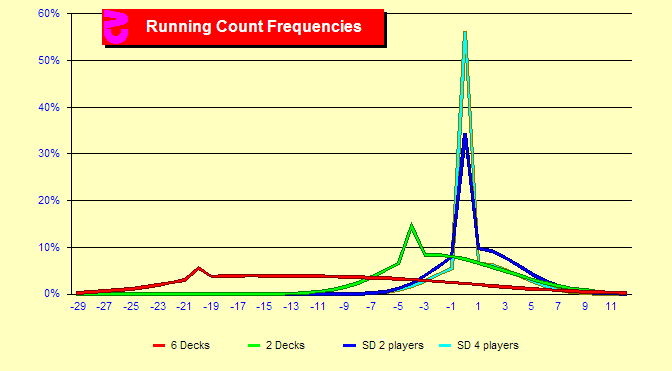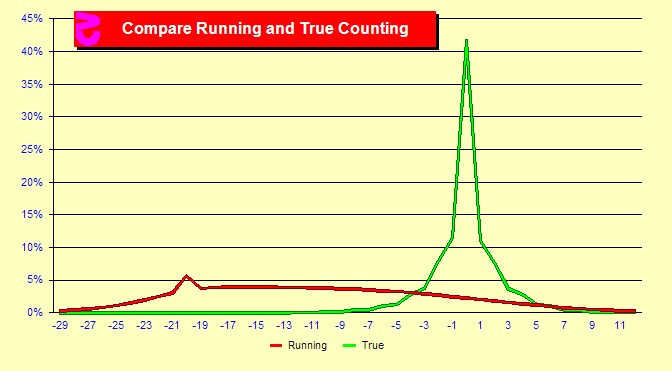|
|
Running-Count Frequencies
 How
often do we get each Running Count? How
often do we get each Running Count?
Unbalanced strategies like KO, Red7 and KISS use the running count.
Let's start by looking at the frequency of running counts for KO.
At the right we see the percentage of hands dealt at each count
using KO for six decks, two decks, and single-deck with two and
four players. We see a peak at -20 for six decks, -4 for two decks
and 0 for single-deck. These are the initial running counts (IRCs)
and the most common simply because you start with these counts.
Since unbalanced counts tend to increase as the cards are dealt,
you will see a greater number of counts to the right of the peaks
then to the left. The range of counts is much larger as the number
of decks used increases. In single-deck we see a much narrower range
of counts and higher peak at zero with an increase in the peak as
the number of rounds decreases.
|
|
 How
do Running and True counts compare? How
do Running and True counts compare?
Let us look now at six-deck running counts using the KO card counting
strategy compared with six decks using Hi-Lo true counts. True-count
systems have a fairly balanced appearance around true count zero
and a small range of counts. In running-count strategies, there
is a large range of counts mostly to the right of the initial running
count. Although running-counted strategies are considered easier,
some people do have difficulty with this large range. Many people
move the Initial Running Count up to zero or higher to avoid negative
counts. But the large range still requires keeping a double-digit
count.
|
|
Sim details
- Six decks, S17, DAS, LS, 4.81/6, Hi-Lo max indexes, trunc, half-deck
- Six decks, S17, DAS, LS, 4.81/6, KO-P
- Two decks, H17, DAS, 1.5/2, KO-P
- Single-deck, H17, 2 players, 4 rounds, KO-P
- Single-deck, H17, 4 players, 2 rounds, KO-P
- Ten billion rounds for six and two decks, five billion rounds
for single-deck
| |
|
|